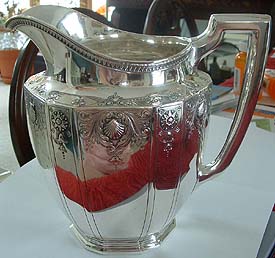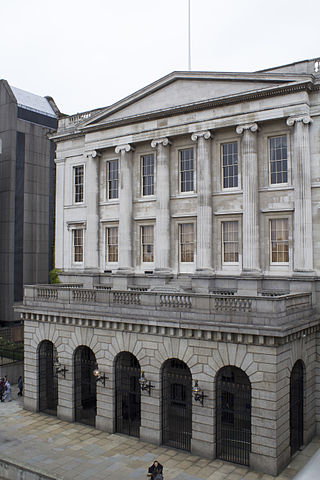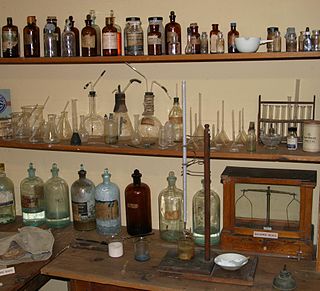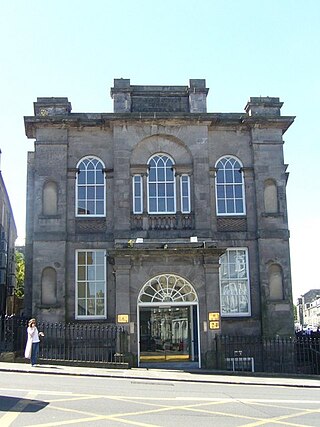
Sterling silver is an alloy composed by weight of 92.5% silver and 7.5% other metals, usually copper. The sterling silver standard has a minimum millesimal fineness of 925.

A livery company is a type of guild or professional association that originated in medieval times in London, England. Livery companies comprise London's ancient and modern trade associations and guilds, almost all of which are styled the "Worshipful Company of" their craft, trade or profession. There are 111 livery companies in total. They play a significant part in the life of the City of London, not least by providing charitable-giving and networking opportunities. Liverymen retain voting rights for the senior civic offices, such as the Lord Mayor, Sheriffs and Common Council of the City Corporation, London's ancient municipal authority with extensive local government powers.

The Worshipful Company of Goldsmiths, is one of the Great Twelve Livery Companies of the City of London, headquartered at Goldsmiths' Hall, London EC2.
A hallmark is an official mark or series of marks struck on items made of metal, mostly to certify the content of noble metals—such as platinum, gold, silver and in some nations, palladium. In a more general sense, the term hallmark is used to refer to any standard of quality. Not to be confused with responsibility marks that are the marks of the maker.
Assay offices are institutions set up to assay precious metals. This is often done to protect consumers from buying fake items. Upon successful completion of an assay the assay offices typically stamp a hallmark on the item to certify its metallurgical content. Hallmarking first appeared in France, with the Goldsmiths' Statute of 1260 promulgated under Étienne Boileau, Provost of Paris, for King Louis IX.

Christofle is a luxury French silverware and tableware company founded in Paris in 1830 by Charles Christofle.

A silver object that is to be sold commercially is, in most countries, stamped with one or more silver hallmarks indicating the purity of the silver, the mark of the manufacturer or silversmith, and other (optional) markings to indicate the date of manufacture and additional information about the piece. In some countries, a national assayer's office controls the testing of silver objects and marking of purity.

A metallurgical assay is a compositional analysis of an ore, metal, or alloy, usually performed in order to test for purity or quality.
Sara Jocelyn Margarita Elissa Burton was an award-winning British silver and goldsmith. Burton was the first woman to receive the City and Guilds of London Institute top award, the Prince Philip Medal.

The Eglinton Trophy or Eglinton Testimonial is a Gothic style Sterling silver centrepiece presented by friends and admirers to the 13th Earl of Eglinton to commemorate the medieval re-enactment known as the Eglinton Tournament held at Eglinton Castle, Kilwinning, North Ayrshire in 1839. At 4 foot 8 inch (140 cm) in height and 1600 ounces (45 kg) in weight it is one of the largest and most extravagant trophies of its kind.
Hersey & Son is a company founded in Clerkenwell, England. The company is a noted firm of Silversmiths with a history dating back to 1955 when Michael Hersey started his apprenticeship and to 1971 when he and David Mills founded the firm.

The Apothecaries' Hall of Ireland is one of only two extant successors of a medieval Dublin guild. Apothecaries in Dublin were first organized as members of the 1446 Guild of Barbers, with St Mary Magdelene as the patron saint. In 1747, Apothecaries formed their own guild, with St Luke as the patron. In 1791, the Company of Apothecaries’ Hall was formed for the purposes of building their own Hall and regulating practitioners throughout Ireland. Although the Company ceased licensing doctors in 1971, it continues to exist as a charitable organisation. The Company of Apothecaries’ Hall now shares premises with the Royal College of Physicians of Ireland on Kildare Street, Dublin.
The Goldsmiths' Company Assay Office in London is the oldest assay office in the United Kingdom. The company has provided hallmarking services since The Goldsmiths Company was founded in the 14th century. The company received its royal charter in 1327 and ranks fifth in order of precedence of the 12 great livery companies of the City of London.
Events from the year 1637 in Ireland.

The Edinburgh Assay Office is the last remaining Assay Office in Scotland and one of four which remain in the United Kingdom.

The Incorporated Trades of Edinburgh are the trade and craft bodies of the City of Edinburgh, Scotland, in much the same way as the livery companies are in The City of London, but on a much smaller scale. The incorporations are not "guilds", that term being properly reserved in Scotland for the merchant bodies in the various burghs. The incorporations have never referred to themselves as guilds; indeed they came into existence, mostly in the latter part of the fifteenth century, in order to counter the growing power of the merchant guild, known as the Royal Company of Merchants of the City of Edinburgh.
William Chaffers was an English antiquary and writer of reference works on hallmarks, and marks on ceramics. His Marks and Monograms on Pottery and Porcelain, first published in 1863, has appeared in many later editions.
Gilbert Leigh Marks was an English silversmith, who worked in the Arts and Crafts style, during a career of little over ten years.
Thomas Fattorini Ltd is a manufacturing jeweller and designer-maker of awards, trophies, ceremonial swords, civic insignia, medals and name badges. The company is located on three sites in Manchester, Birmingham and London with their head office in Skipton, North Yorkshire.

The Guilds of the City of Dublin were associations of trade and craft practitioners, with regulatory, mutual benefit and shared religious purposes. In their eventual number they were sometimes called the "25 minor corporations", in contrast to the city's principal authority, the Dublin Corporation). They operated in various forms from near the time of the Norman invasion of Ireland - the Merchants’ Guild existed in some form by 1192 - until the mid-19th century, and a few of which have descendent operations to the present day.











